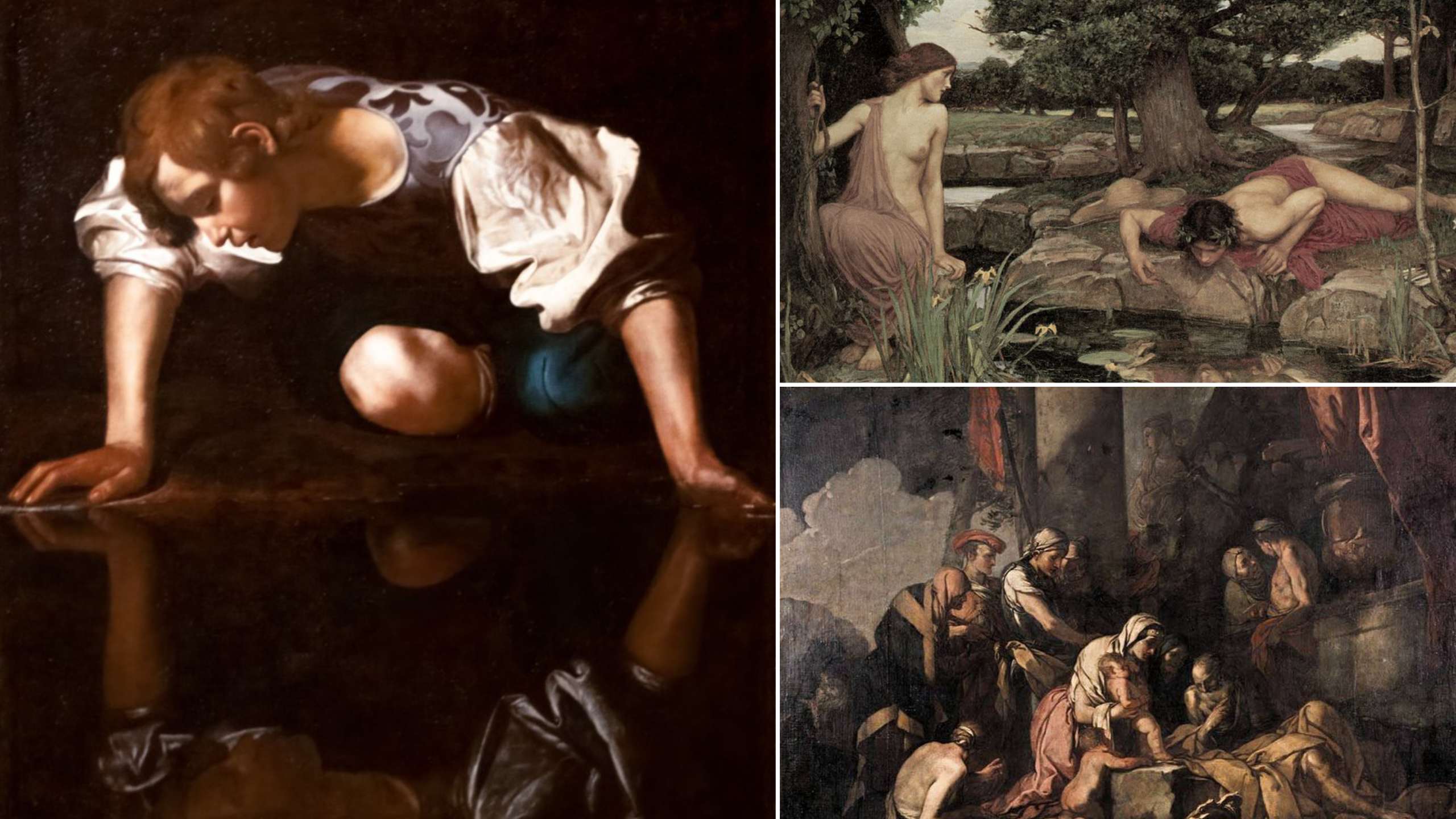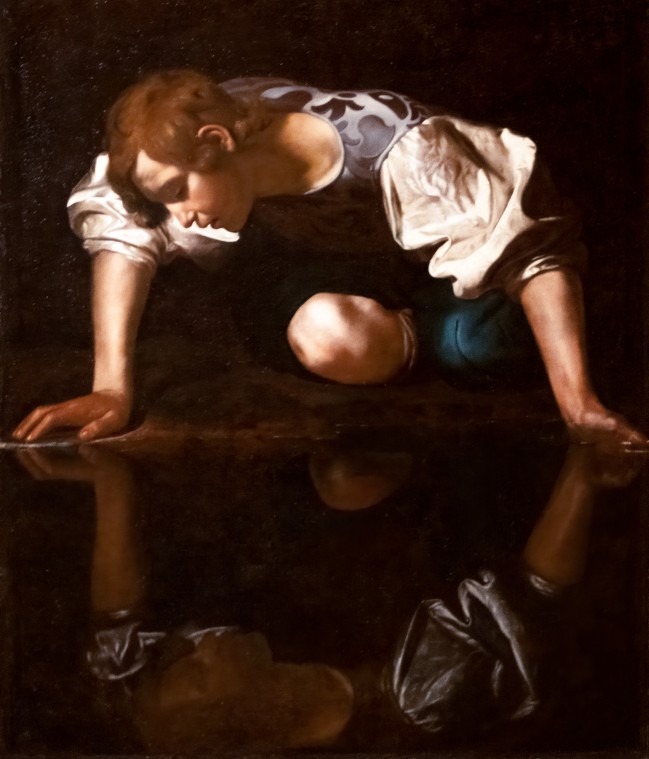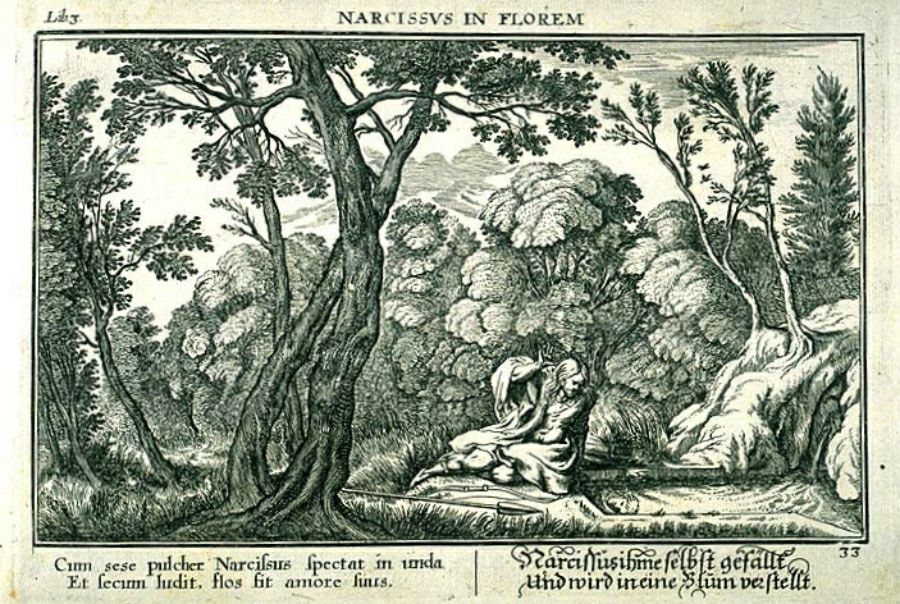It seems that the words of history remain true even today, and every part of the world has its deep imprint. Whether it is a vindicated historical event or a mythical story, if we think deeply, the purpose of each event is to make us see the distinct reality of our life. Narcissus’ case bears just that.

Narcissus fell in love with his own reflection

Narcissus, in Greek mythology, was the son of the river god Cephissus and the nymph Liriope. He was distinguished for his beauty. According to Ovid’s Metamorphoses, Book III, Narcissus’ mother was told by the blind seer Tiresias that he would have a long life, if he never recognize himself.

However, Narcissus’ rejection of the love of the nymph Echo or (in an earlier version) of the young man Ameinias drew upon him the vengeance of the gods. He fell in love with his own reflection in the waters of a spring and pined away (or killed himself); the flower that bears his name sprang up where he died.
The Greek traveler and geographer Pausanias, in Description of Greece, Book IX, said it was more likely that Narcissus, to console himself for the death of his beloved twin sister, his exact counterpart, sat gazing into the spring to recall her features.
The story may have derived from the ancient Greek superstition that it was unlucky or even fatal to see one’s own reflection. Narcissus was a very popular subject in Roman art. In Freudian psychiatry and psychoanalysis, the term narcissism denotes an excessive degree of self-esteem or self-involvement, a condition that is usually a form of emotional immaturity.
The many versions of the myth of Narcissus

Several versions of the myth have survived from ancient sources. The classic version is by Ovid, found in Book III of his Metamorphoses. This is the story of Echo and Narcissus. When Liriope gave birth to the handsome child Narcissus, she consulted the seer Tiresias, who predicted that the boy would live a long life only if he never discovered himself.
One day Narcissus was walking in the woods when Echo, an Oread (mountain nymph) saw him, fell deeply in love, and followed him. Narcissus sensed he was being followed and shouted “Who’s there?”. Echo repeated “Who’s there?” She eventually revealed her identity and attempted to embrace him. He stepped away and told her to leave him alone. She was heartbroken and spent the rest of her life in lonely glens until nothing but an echo sound remained of her.

Nemesis (as an aspect of Aphrodite), the goddess of revenge, noticed this behaviour after learning the story and decided to punish Narcissus. Once, during the summer, he was getting thirsty after hunting, and the goddess lured him to a pool where he leaned upon the water and saw himself in the bloom of youth. Narcissus did not realize it was merely his own reflection and fell deeply in love with it, as if it were somebody else. Unable to leave the allure of his image, he eventually realized that his love could not be reciprocated and he melted away from the fire of passion burning inside him, eventually turning into a gold and white flower.
An earlier version ascribed to the poet Parthenius of Nicaea, composed around 50 BC, was discovered in 2004 by Dr Benjamin Henry among the Oxyrhynchus papyri at Oxford. Unlike Ovid’s version, it ended with Narcissus who lost his will to live and committed suicide.
A version by Conon, a contemporary of Ovid, also ends in suicide (Narrations, 24). In it, a young man named Ameinias fell in love with Narcissus, who had already spurned his male suitors. Narcissus also spurned him and gave him a sword. Ameinias committed suicide at Narcissus’s doorstep. He had prayed to the gods to give Narcissus a lesson for all the pain he provoked. Narcissus walked by a pool of water and decided to drink some. He saw his reflection, became entranced by it, and killed himself because he could not have his object of desire.
A century later the travel writer Pausanias recorded a novel variant of the story, in which Narcissus falls in love with his twin sister rather than himself. In all versions, his body disappears and all that is left is a narcissus flower.
The origin of the term “narcissism”
The story of Narcissus gave rise to the term “narcissism”, a fixation upon oneself and one’s physical appearance or public perception. In 1898 Havelock Ellis, an English sexologist, used the term “narcissus-like” in reference to excessive masturbation, whereby the person becomes their own sex object.
In 1899, Paul Näcke was the first person to use the term “narcissism” in a study of sexual perversions. Otto Rank, in 1911, published the first psychoanalytical paper specifically concerned with narcissism, linking it to vanity and self-admiration. Sigmund Freud published a paper exclusively devoted to narcissism in 1914, called “On Narcissism: An Introduction”.




